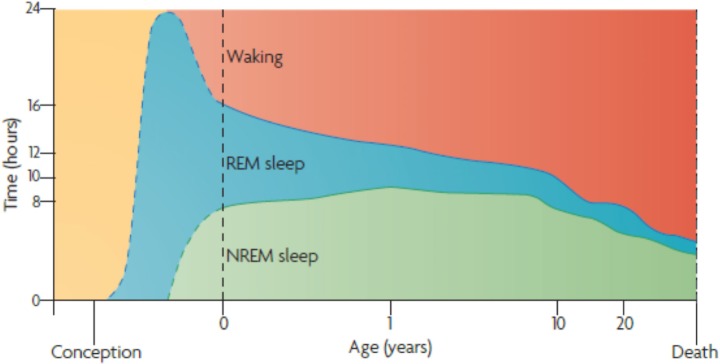FIGURE 1.
Ontogenesis of REM Sleep. Human sleep and age. The marked preponderance of REM sleep in the last trimester of pregnancy — and the 1st year of life — decreases progressively as waking time increases. Note that non-REM sleep time, like waking time, increases after birth. Despite its early decline, REM sleep continues to occupy approximately 1.5 h per day throughout life. This suggests its strongest developmental contribution is to early brain-mind development; however, it subsequently plays an equally indispensable part in brain-mind maintenance. The ‘after-birth’ part of this figure assimilates findings from several groups (Roffwarg et al., 1966), while the ‘before-birth’ recapitulates Hobson’s extrapolation from a small number of observations of premature newborns (Roffwarg et al., 1966). Adapted from (Hobson, 2009) with the permission from Springer Nature.

